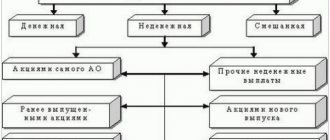The concept of forced absenteeism according to the Labor Code of the Russian Federation
The Labor Code does not define the term “forced absenteeism.” Traditionally, it is believed that this is the absence of working days by an employee due to the direct fault of the employer. For example, a boss wants to fire a worker, but the latter does not seek to draw up a resignation letter of his own free will. The employer literally forces the employee to leave by not allowing him to enter the workplace. The worker cannot continue to work, which can be considered forced absenteeism (AF). As a rule, this concept is associated specifically with illegal dismissal.
The concept of forced absenteeism is set out in the following articles of the Labor Code of the Russian Federation:
- Article 373 . Establishes the employer’s obligation, in the event of illegal dismissal, to restore the employee to his previous rights, as well as to pay for all days of forced absence.
- Article 391 . A person, if he cannot get a job due to an illegal entry in the work book or due to failure to issue a work book, can recover through the court from the employer compensation for days of temporary work leave.
- Article 234 . Establishes the need for the employer to pay compensation to the employee in the amount of average earnings for days of temporary work.
The Labor Code of the Russian Federation protects the rights of workers. If an employer infringes on the interests of an employee, the latter may appeal to the labor inspectorate or court.
In what cases does forced absenteeism occur?
Absenteeism may be considered forced in the following circumstances:
- The employer is trying to force an employee to leave the organization by not allowing him to enter the workplace. This fact needs to be confirmed. Witness statements, photos and videos are used as evidence.
- Transferring an employee to a position with less pay without sufficient grounds.
- Refusal to hire a person without any reason.
- An employer illegally dismisses an employee “under an article” (for example, the dismissal occurs due to the worker’s absenteeism, but the fact of failure to appear at the workplace is not confirmed or documented in any way). Due to this, a person cannot get a job.
- The employer does not issue the employee with a work book upon his dismissal. This again makes it difficult to get a job. A person is forced to sit at home rather than continue his work activity.
In all these cases, the employer commits an offense. He is obligated not only to make all necessary payments for the period of VP, but also to eliminate the violation of the law. For example, reinstate an employee or remove a negative entry from his work record.
Results
If the employer has not complied with all the requirements of the Labor Code of the Russian Federation when terminating or suspending an employment relationship with an employee, this may lead to forced absenteeism of the latter due to the fault of the manager. The result for the company will be negative - both financial losses and a fine from government agencies.
Read more about the legal consequences of illegal dismissal here.
Sources:
- Tax Code of the Russian Federation
- Labor Code of the Russian Federation
You can find more complete information on the topic in ConsultantPlus. Free trial access to the system for 2 days.
How is the duration of forced absence determined?
It is extremely important to determine the duration of the VP, since in order to calculate compensation you need to know the time frame for which accruals occur. The period of absenteeism is the time between the date of dismissal (the first forced absence from work) and the date of the decision of the legal structure (court).
Example 1
On May 15, 2021, the person was illegally fired under the article “absenteeism.” He immediately filed a claim in court to restore his rights. On June 15, a court ruling came into force, according to which the employer is obliged to remove the illegal in this case wording of dismissal from the work book, and also reinstate the employee in his position. The period of forced absence in this case is a month. The employer must pay compensation for all these days.
Mistakes made by employers
| Condition | Wrong position | The right approach |
| Compensation calculation | The calculation uses the average monthly number of days in a month (29.3) | The actual number of days worked is used, the monthly average is used only for calculating vacation pay |
| Offset of amounts previously received by an employee upon dismissal | When calculating and paying compensation, all amounts received by the employee upon dismissal are taken into account. | The amounts of previously received compensation for unused vacation are counted against the assigned payments for VP. Other payments are not taken into account |
Question No. 1. When reinstating an employee, is the period of temporary employment included in the length of service that gives the right to additional payments or benefits as in the case of a person’s work?
The time of forced absenteeism gives the employee the right to include a period in the length of service for accruing vacation, receiving bonuses in connection with the time spent working at the enterprise, and paying financial incentives.
Question No. 2. Is it possible to receive compensation for downtime without reinstatement?
The judicial authority may recognize violations of norms, the fact of forced absenteeism and the assignment of an obligation to pay an employee who did not express in the claim a desire for reinstatement at work.
How is forced absence paid?
For each day of absenteeism through no fault of the employee, compensation equal to the average salary of the employee per shift is accrued. First, the accountant must determine the average salary of the employee.
ATTENTION! The rules for calculating average income are set out in Article 139 of the Labor Code of the Russian Federation. They are also recorded in Decree of the Government of the Russian Federation dated December 24, 2007 No. 922.
Calculation of payments to an employee during VP
How will the average employee income be calculated in this case? When calculating, the following sources of the worker’s earnings are taken into account:
- Salary.
- Premium.
- Various surcharges.
- Allowances.
ATTENTION! The calculations do not take into account benefit payments and contributions to the pension fund. That is, before determining official earnings, they must be subtracted from the employee’s income.
To determine average income, you must first calculate the employee's total income since the beginning of the year. For example, on February 1 he received 31,700 thousand. From this amount, standard charges to the funds are deducted, amounting to 1,700 rubles. The resulting amount must be divided by the number of days from the beginning of the year. It turns out 1,000 rubles. This is the employee's daily income.
IMPORTANT! When calculating, only the official salary of the employee is taken into account. For example, if a worker officially received only 8,000 rubles, but his unofficial salary was 100,000 rubles, calculations will be made based on the official 8,000 rubles. That is why it is beneficial for an employee to have a “white” salary.
What's next?
The average daily wage of a person is multiplied by the number of days of temporary work. For example, absenteeism due to the fault of the employer was 30 days. The average daily salary is 1,000 rubles. The amount of payments in this case will be 30,000 rubles.
Are payments subject to personal income tax?
Payments for the WP period can be considered a regular salary. Therefore, they will be taxed at the standard rate of 13%.
Payment amount calculation
The amount of compensation is determined taking into account the average earnings per working day and the number of working days during the period when the employee was in a state of forced downtime. To calculate your average daily earnings, you need to take a number of sequential steps.
- Set the billing period and its duration. To calculate compensation, it is taken equal to 12 full months, but cannot exceed the actual duration of a person’s work in the organization.
- Obtain information about the employee’s income for each month of the pay period. Social and non-wage compensation and benefits should be excluded from the total amount.
- Determine (if necessary) the increasing factor. It is calculated if there was an increase in wages during the billing period. Then all previously accrued amounts should be recalculated taking into account the increasing coefficient.
- Calculate the total amount of income received by the employee, taking into account the increasing coefficient.
- Determine the number of working days in the billing period.
- After completing these operations, we can calculate the average daily earnings by dividing the total amount of the employee’s estimated income by the number of days taken into account in the calculation.
Important
There are a number of exceptions to the above calculation procedure.
If during the billing period the employee did not actually work or his wages were not accrued, then the calculation is made according to the following rules:
- in the absence of such in the billing period or for a period exceeding the billing period, the actually accrued wages for the previous period equal to the billing period are taken;
- in the absence of such in the billing period and before its start, the amount is determined based on the amount of wages accrued in the month of dismissal;
- if there are none in the billing period, before and after its start, the tariff rate or salary established for the employee is taken.
Calculation example
Let's assume that Matvey was hired on May 10, 2021 and was illegally fired on May 10, 2021. Then the duration of the billing period will be 11 months - from June 1, 2021 to April 30, 2021.
For the specified period, Matvey received the following wages:
- 20,000 rub. — from June to November 2021 (7 months);
- RUB 9,524 — for December 2021, from December 1 to December 15 (15 days), the employee was on sick leave;
- 30,000 rub. — from January to March 2021 (3 months);
- 25,000 rub. - for April 2021.
In our case, in January 2021 there was an increase in wages. Therefore, it is necessary to calculate the multiplying factor. It will be the quotient of 30 thousand rubles divided by 20 thousand rubles, that is, 1.5.
Then Matvey’s estimated income for this period is:
20,000×7 x 1.5 + 9,524×1.5 + 30,000×3 + 25,000 = 339,286 rub.
The number of working days in the billing period is 237.
The average earnings of our employee per day will be:
339,286: 237 = 1,431.58 rubles. in a day.
If forced absenteeism due to illegal dismissal lasted from May 11 to June 18, 2021, then compensation should be calculated for 27 working days and amount to 1,431.58 × 27 = 38,652.66 rubles.
Is it possible to reduce the amount of compensation?
When dismissing an employee, the employer can make the necessary payments, in particular severance pay and compensation for unused vacation. In accordance with paragraph 62 of the resolution of the Plenum of the Supreme Court No. 2, funds paid as severance pay are subject to offset when determining the amount of compensation for absenteeism. Thus, the amount of payment for forced absence will decrease.
The following payments are not subject to offset:
- wages paid to an employee by another employer, regardless of the time of employment and work schedule;
- benefits for temporarily disabled persons, including disability benefits;
- unemployment benefits.
Neither the Labor Code of the Russian Federation nor other acts contain instructions on how to deal with money paid as compensation for unused vacation, and therefore do not provide the opportunity to reduce compensation for forced absence by these amounts. All that remains is to refer to the clarifications in the letter of Rostrud “On the provision of annual paid leave...” dated June 14, 2012 No. 853-6-1, according to which the reinstated employee acquires all the rights that he had before the illegal dismissal. The continuous course of work experience and, consequently, the right to annual paid leave are restored.
This is also important to know:
How payment for downtime due to the fault of the employee and the employer occurs
Thus, the employee has 2 options:
- After being reinstated at work, write a statement and return an amount equal to compensation for the vacation to the organization’s cash desk (when the vacation period begins, he will be able to receive all vacation pay in full). The employer must be careful in this matter and accept money only if there is a written statement from the employee explaining what amounts he returns to the cashier and what their purpose is.
- No refund. In this case, this amount will be deducted from his vacation pay and he will receive only the part that is formed taking into account the illegal dismissal.
Reflection of payments in accounting
Data in accounting, according to the Letter of the Ministry of Finance dated June 17, 2021, must be entered simultaneously with the elimination of the offense against the employee. For example, if an illegal dismissal occurs, the accountant enters information simultaneously with the employee’s reinstatement and the order for his dismissal is cancelled. Payments for the period of forced absence and accrued insurance premiums can be included in expenses in the general manner.
Example 2
The employee was illegally fired in February. He went to court to restore his rights. The court upheld his claim and ordered the employer to pay 110,000 rubles for the period of temporary detention. The employee was reinstated and received funds in full. As of the date of compensation:
- The employee does not have the right to a standard personal income tax deduction.
- The amount of compensation does not exceed the maximum amount accepted for calculating insurance premiums.
The accountant makes the following entries:
- DT20 (25, 26, 44) KT70. Explanation: calculation of average earnings. Amount: 110,000 rubles.
- DT20 (25, 26, 44) KT69. Explanation: calculation of insurance premiums. Amount: 33,220 rubles (110,000 * 30.2%).
- DT70 KT50. Explanation: payment of compensation to an employee. Amount: 110,000 rubles.
- DT70 KT68. Explanation: personal income tax withholding. Amount: 14,300 rubles (110,000 * 13%).
This is the standard procedure for recording information in accounting.
The procedure for recovery from the employer
In a situation in which a citizen has been suspended from performing his official duties due to the fault of the company’s management, he can appeal to higher authorities to protect his rights.
In this case, going to court is considered the most effective. Payment of appropriate compensation is carried out on the basis of a decision made by a government agency.
Free legal consultation We will answer your question in 5 minutes!
Free legal consultation
We will answer your question in 5 minutes!
Ask a Question
Call: 8 800 511-39-66
To contact the specified authority, an employee whose rights have been violated must prepare a special statement of claim.
Important
An important point is the correctness of its design.
Subsequently, a court hearing is scheduled, following which a document is issued that serves as the basis for collecting average earnings from the employer - an order.
This is how an employee can hold the employer financially liable for violating worker rights.
How to file a claim with the courts
A citizen can go to court both to receive compensation for removal from work for unjustified reasons, and to recover compensation for moral damage.
To do this, he must draw up a special statement of claim.
The document must reflect the following information:
- full name of the judicial authority;
- Full name of the plaintiff, actual address of his residence;
- information about the employer - address of the company, full name of the manager, indication of the form of labor activity;
- document's name;
- text outlining the essence of the problem:
— date of hiring;
— the position for which the employee was assigned;
— indication of the moment of absence of violation during the performance of official duties;
- the reason for forced absence with a description of the details. For example, if a citizen was unreasonably dismissed, the date of this event and the rationale for his opinion should be indicated - why he believes that the dismissal was unlawful;
- reference to Article 234 of the Labor Code of the Russian Federation - in accordance with it, the employer’s obligation to pay compensation for illegal dismissal is determined;
- assessment of moral damage;
- the plaintiff’s requests for the recovery of average earnings, for the issuance of the necessary documentation;
- list of attachments - employment contract, various certificates and orders that act as confirmation of the information presented;
- applicant's signature, transcript;
- document submission date.
Sample certificate of average salary for the court
The calculation of average earnings is usually carried out by the court itself based on the data provided on a person’s income for the last 12 months.
A citizen must obtain this certificate at his place of work.
To confirm the level of income on the basis of which the amount of compensation for absenteeism is determined, a certificate of the employee’s average earnings is submitted to the court.
It should contain the following information:
- company name, TIN, OGRN, KPP;
- Title of the document;
- initials and position of the citizen, information about which is included in the certificate;
- the amount of average earnings for a certain period of time;
- the basis on which the employer was guided when making calculations - Article 139 of the Labor Code of the Russian Federation;
- signatures of the compilers - chief accountant and director of the organization;
- date of writing;
- phone number and full name of the performer.
Additional compensation
The employee can also count on additional compensation for moral damage caused. The decision on the obligation to pay it is made by the court. The amount of compensation depends on the employee’s requirements, as well as the judge’s decision. For example, a worker may request a million rubles, but the judge will assess the moral damage caused as a lesser amount and oblige the employer to pay 10,000 rubles.
IMPORTANT! When such cases are initiated, compensation does not automatically accrue. To receive them, you must indicate the corresponding requirement in your claim.
Arbitrage practice
Any action of the employer in relation to the employee must be recorded in the form of orders, acts, orders and other documents. It is especially important to take this into account if a decision is made to dismiss an employee on his own initiative.
It is important to fill out the necessary documents correctly and in a timely manner and make the required payments. The same applies to various types of disciplinary sanctions, transfers and other manipulations with personnel. This is critical if a person goes to court to challenge management decisions.
According to judicial practice, often illegal actions of the employer include violation of deadlines and incorrect execution of documents. To a greater extent, the law protects the rights of the employee and provides for various ways to protect them.
Based on the facts, the court decides how legal the boss’s action was in relation to the employee and whether the employee himself was at fault in the current situation. If the employer is found guilty, all his decisions are canceled and the person returns to his previous position.
In addition to paying the average wage, the court may oblige the organization to make additional payments: compensation for moral damage, interest for delays in wages, payment of costs of the court case.
During the work process, various situations may arise, including quite unpleasant ones for the employee. Forced absenteeism is a very unpleasant story in the life of a working person, especially when it comes to illegal dismissal from work or removal from office. The law is quite loyal to employees and often protects many shortcomings on their part.








